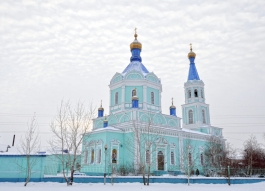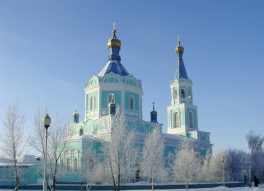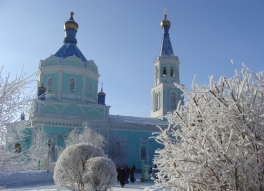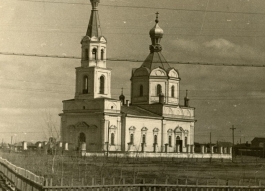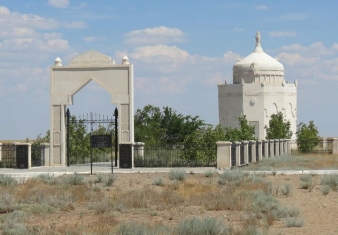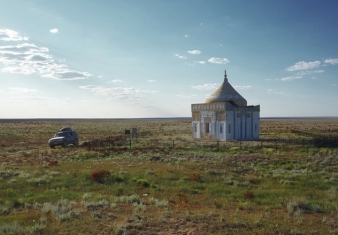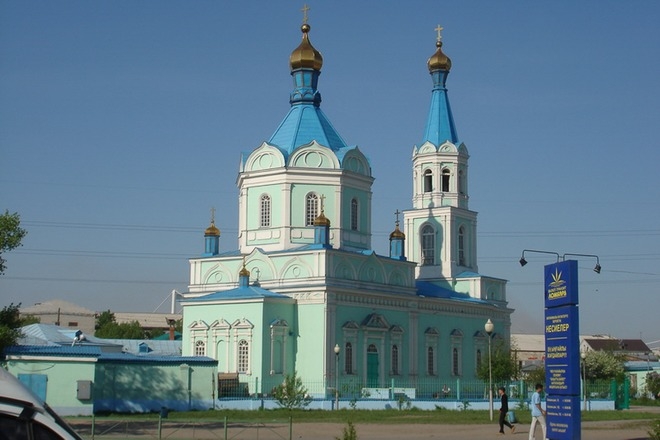
 Cultural heritage
Cultural heritage
Cathedral of Resurrection of Semey is considered to be as not only a wonderful monument of architecture but also a working church, a kind of religious spiritual center uniting Orthodox inhabitants of the region.
The cathedral was built on the initiative and at the expense of one of the wealthiest residents of the town, a retired sergeant Mitrophan Georgievich Kazakov. The building was designed by the local regional architect Alexander Bolbotov.
When creating the cathedral he took the project of one of the capital's temples - Mironovsk Church of St. Petersburg as a basis, Mironovsk Church was sponsored by the great Russian architect - the court architect, academician Konstantin Andreyevich Ton. Alexander Bolbotov made a great job of refining and adapting the project to local conditions.
As a result, the project was approved in Tomsk Building Commission, which gave permission to begin construction. Selection of an appropriate place for the construction of the cathedral took up a long time, taking into account the sandy soil of the earth, it was recommended to strengthen the foundation by making it of the toughest materials and the most careful laying.
The first foundation stone of the future cathedral was laid on March 31, 1857, the building was constructed for only about three years, and the grand opening of the cathedral was held on July 10, 1860. Considering the complexity of the engineering solutions and architectural designs this construction speed is really amazing.
There is a description of the cathedral referring to 1862, "Stone stone church with a bell tower, protected by a stone wall with wooden lattices, and it is equipped with rich utensils and all other amenities. Three thrones: central - in honor of the Resurrection of Christ, right - in honor of St. Mitrophan, Voronezh miracle worker, and left - in honor of Archangel Michael. One house reserved for deacon".
In the late 19th-century bell tower was located in two tiers, it had five bells weighing from 1 to 35 pounds. In 1885, stone porches were built instead of three wooden and a new staircase leading to the bell tower was installed.
Despite its age and all the historical cataclysms, the building of the cathedral almost managed to save its original appearance. The most tragic moments in the history of the church occurred during the establishment of Soviet power.
The church was completely looted during campaigns of church property withdrawal in 1922. The last bell rang in the bell tower of the church in 1934. Clergy and most active part of the congregation were arrested in two stages during repressions in 1937. In fact, the Resurrection church occurred to be closed for believers, notwithstanding the fact that church property withdrawal had not been legalized.
During the war, the attitude of the Soviet state towards the believers, despite recent persecutions, changed. On March 20, 1944, a group of believers addressed Ombudsman for the Russian Orthodox Church at the Semipalatinsk regional Executive Committee with a request for the opening of the Resurrection Church. Regular services were resumed at the Church of the Resurrection of Semipalatinsk on April 16, 1944.
In summer of 1997, all the heating inside the cathedral was replaced during the overhaul. 9 bells with a total weight of 1500 kg were purchased in Kamensk-Uralsk in 1998. Much work was done to repair the Resurrection Cathedral in 2001, mostly to renew the outside of the building.
There were significant changes in the area adjacent to the territory of the church: administrative-service blocks, the building of Sunday school and All Saints baptismal church were built. The territory of the temple expanded significantly, therefore, a new church fence, stylistically reminiscent of the old, dismantled during repair work, was structured.
There are plantations inside the fence, paths are lined with paving stones. By the fall of 2001 overhaul of the cathedral was completed, after which it appeared before the citizens in its fresh exterior.
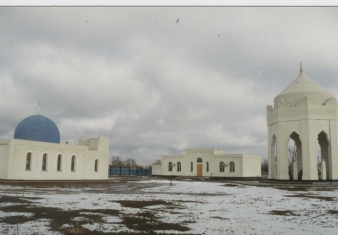
In 50 km from the modern city of Atyrau, there is one of perspective tourist routes, regional memorial estate "Khan Ordaly Sarajshyk" who opens all ancient history of the Kazakh people.
The grave site of the great Kazakh poet of the 19th century, free-thinker and inspirer of the rebellion of Makhambet Utemisov is situated in Inder, Atyrau region, 40 km to the south-east from the village Inderbor.
Atyrau region is rich in its architectural monuments of culture, one of them is considered to be Zhuban Mausoleum.
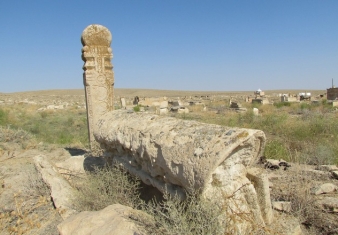
Senek reserve is an architectural monument of the XVII - XX centuries, it represents a necropolis consisting of several sepulchral constructions and an old mosque.
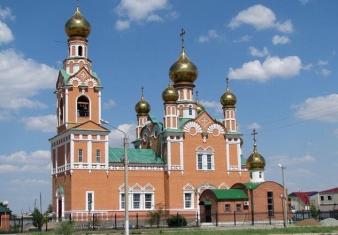
One of the oldest and most beautiful architectural monuments of the city - Uspenski Cathedral is located in the heart of the city of Atyrau, on Issatay Taimanov street, just a few steps from the main square.
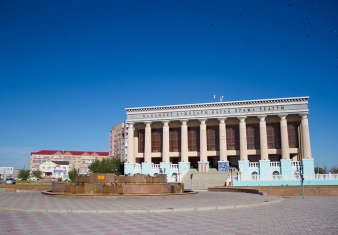
One of the leading places in the cultural life of Atyrau and the whole Atyrau region belongs to the Kazakh Drama Theater named after Makhambet Utemisov.














